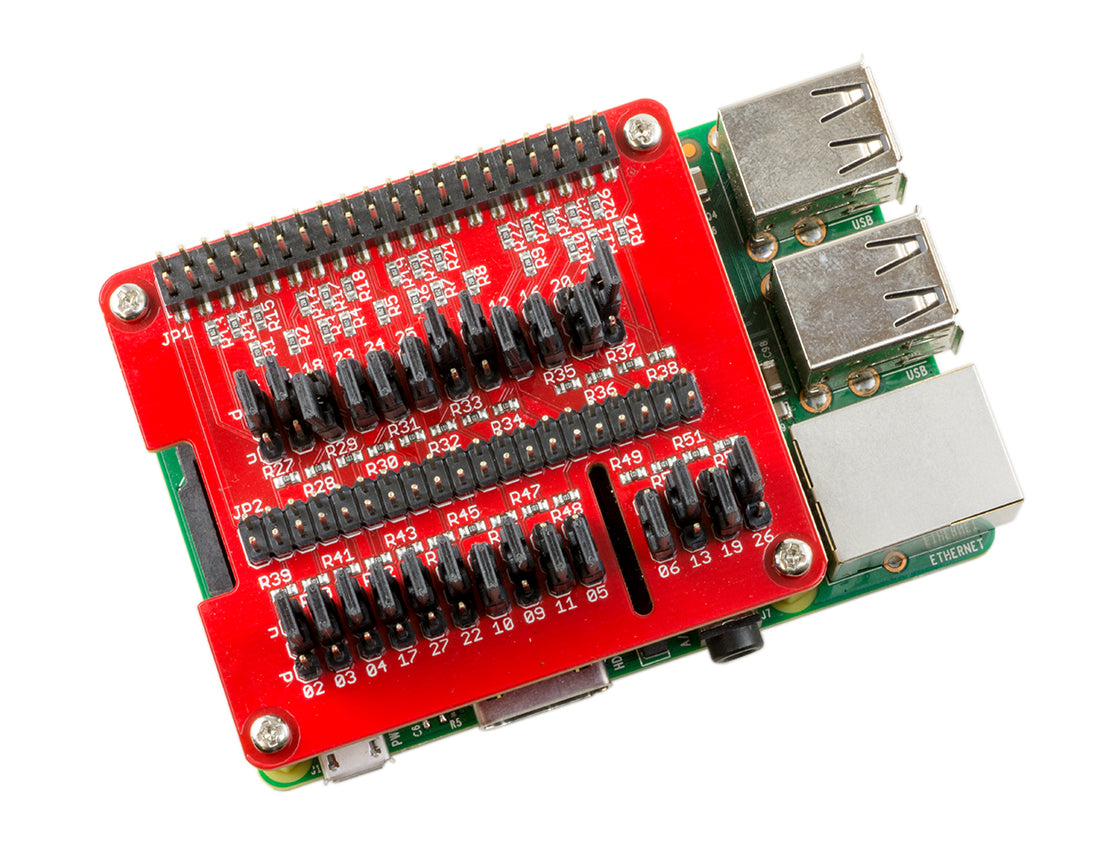
How to use ModMyPi's PUD HAT
If you want to detect an "output" with your Raspberry Pi, like a button being pressed or a motion sensor detecting movement, we can configure our Raspberry Pi's GPIO pin as an "input". That input pin can be in three states (known as Tri-State logic); "high", when 3.3V is applied, "low", when the pin is connected to 0V, and "floating" when the state is undefined. Floating voltages are troublesome in electronics as the input can either read high or low depending on various fluctuations in electrical noise. The idea of using a pull-up or pull-down resistor in your circuit is to prevent floating values, these are values which aren’t fully high and neither fully low, they are floating somewhere in the middle.
Like a gate flapping open and closed in the wind, someone needs to lock the gate closed, or wedge it open. If you leave it flapping, it's likely to hit someone on their bottom on the way through! If the output of your sensor goes high, to 3v3, when it’s triggered but doesn’t get tied, or pulled-down, to ground when it’s not being triggered, you could end up with a floating value, causing false positives. Like our gate, the best way to avoid a floating input is to "tie" your input pin either high or low to create a default state. This is usually achieved through the use of a pull-up or pull-down resistor, either connecting our input pin via a resistor to the Pi's 3.3V to achieve a 3.3V high state, or the GND line to achieve 0V low state.
The PUD (Pull Up/Down) HAT from ModMyPi features a very simple set of resistors designed to save you the touble of wiring up your own pull-up or pull-down resistor circuit!
In this tutorial, we’ll show you a very basic way to use the PUD HAT. We are simply going to wire up two buttons. One will be connected to the 3v3 line, so when it’s pressed it will send 3v3 to our input pin. The other will be connected to ground, and when pressed send 0v to our input pin.
These buttons will go through our PUD board, the 3v3 button being pulled down, and our 0v button being pulled high.
Start by plugging the PUD HAT onto the Raspberry Pi.
Then you’ll need to wire up your buttons on a breadboard and connect them to the PUD as illustrated below. Wire up the 3v3 line from the Pi to your breadboard, as well as one of the many GND pins, we've used Pin 39 as our GND pin.
The button connected to the 3v3 line on the breadboard should be connected to GPIO18 / PIN12. We need to pull GPIO18 LOW, to do this, simply place a jumper between the middle pin and the top pin where the bank of pins are labelled 18. Notice the letter "d" and "u" on the edge of the PCB, this indicates which "way" the pins are being pulled, u = UP, d = DOWN.
The button connected to the GND line should be connected to GPIO17 / PIN11. We need to pull GPIO17 HIGH, to do this, simply place a jumper between the middle pin and the top pin where the bank of pins are labelled 17. Notice the letter "d" and "u" on the edge of the PCB, this indicates which "way" the pins are being pulled, u = UP, d = DOWN.
Once that’s all wired up, you can copy the code below, and execute it. The code will show the initial states of our inputs, which should be 1 for the button pulled up and 0 for the button pulled down. When a button is pressed these values should change. So the button connected to the 3v3 line should change to 1, and the button connected to the ground line should change to 0.
from RPi import GPIO
from time import sleep
GPIO.setmode(GPIO.BCM)
GPIO.setup(17, GPIO.IN)
GPIO.setup(18, GPIO.IN)
print "---- INITIAL INPUT STATE ----"
print "GPIO17 %d" % GPIO.input(17)
print "GPIO18 %d" % GPIO.input(18)
print "-----------------------------"
try:
while True:
if GPIO.input(17) == 1:
print "Button pressed! GPIO17 %d" % GPIO.input(17)
if GPIO.input(18) == 0:
print "Button pressed! GPIO18 %d" % GPIO.input(18)
sleep(0.2)
except:
GPIO.cleanup()
That's it! Pulling-up or pulling-down there's no longer any need to frown!









